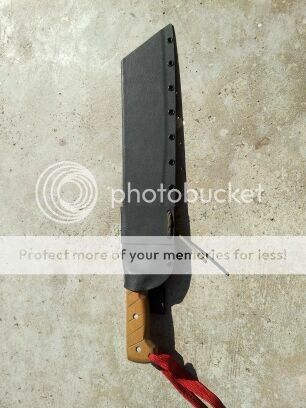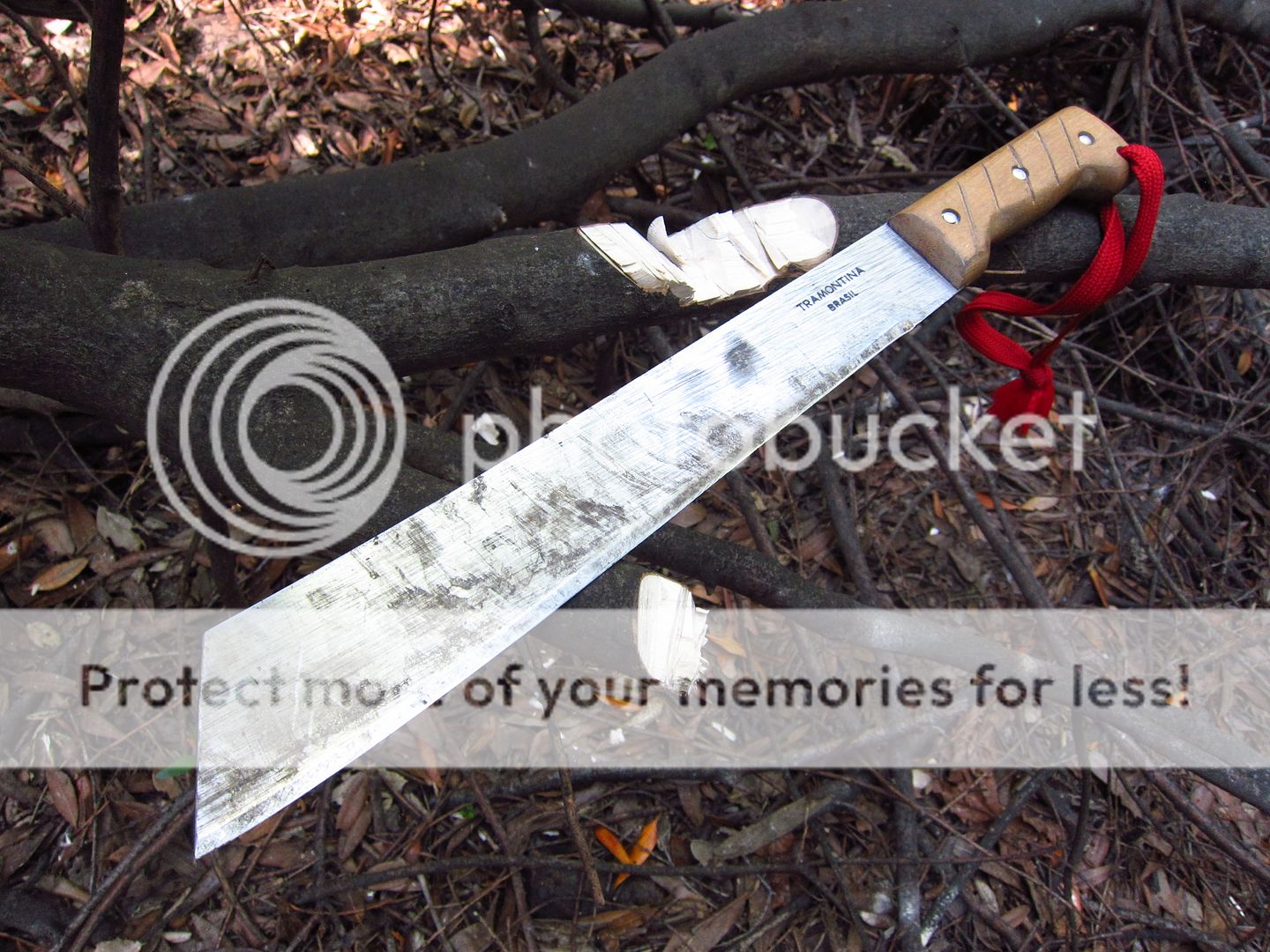I agree Mr FortyTwoBlades. Wholeheartedly.
And the thrust of our discussion does nothing to support the argument that somewhere out there is a knife that can do everything well.
I like the sound of that bush cutlass.
The trouble with gorse, and other scrub, is that it doesn't always grow in patches with uniformly sized stems. Danged stuff might be as thin as a pencil, or as thick as your arm. But that wouldn't stop me coveting a tool like a bush cutlass. It would certainly be useful. And if I were working from a vehicle, it wouldn't hurt to carry a variety of tools for whatever may be encountered. I do this sometimes as I am involved with a property conservation trust which has a lot of regenerating scrub on the land that it owns. We use a bulldozer at times, but more often the work is done with chainsaws, weed trimmers, herbicide (reluctantly), slashers, axes, grubbers (mattock?), one machete and sheep. Where possible I like to use a grubber on smaller scrub because if I chop it off at ground level, or even wrench it from the ground, it is less likely to re-grow.
In my pre-machete days, the tool recognised as appropriate for clearing scrub like our gorse was the slasher. Some folks might call this type of thing a brush hook. This had a longish wooden handle with a socketed steel blade. Blade design varied, but generally all the slashers I used or saw had fairly thick blades. A lot of them got broken handles.
One of the problems with cutting nasty shrubbery with prickles is to keep ones body unscathed. Leather gloves would help. Things like gorse and blackberry tend to ride along the tool and collide with hands and arms. And if a big branch is chopped through, it can land on you. It might seem slow, but heavy lopping shears provide an option that can be less frustrating. However slashers and loppers aren't the most convenient thing to stow in your hiking pack.
Although I have had experience with only a few machetes, I'm inclined to think that something like a 16" Tramontina is a good all-round tool to have with you. It mightn't be the best implement for all tasks, but it will be a big help in a number of situations. Plus they are tough and proven.
Now I have to figure out what to do with the 24" monster machete I bought. Seems a pity to cut it down when it might be of use like it is to someone else (geez they'd have to be tough and in peak condition to swing it for more than a couple of hours). I could reduce it to a sensible length and use the offcut to create a tough and versatile sheath knife. Meanwhile I will look at it in wonder.













